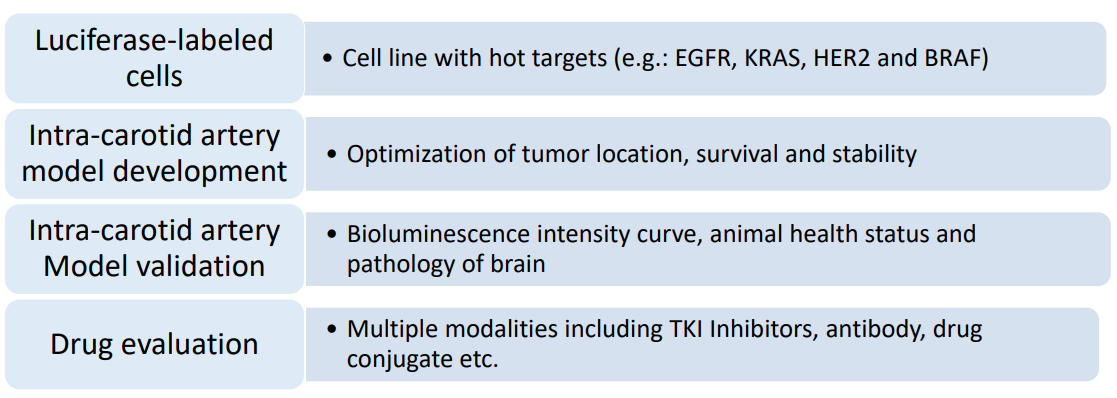Intra-carotid artery brain metastasis models for the evaluation of lung and breast cancer drugs

Non-CNS metastatic brain cancer is approximately 10 times more common than CNS cancer. Lung cancer and breast cancer account for most brain metastasis. KRAS-mutant NSCLC composes a third lung adenocarcinoma, among which 17% to 55% will develop brain metastases. Likewise, more than a third HER2-positive breast cancer will develop brain metastasis. Among existing animal models, the ectopic injection in brain cannot reflect the mechanism of tumor invasion and metastasis, while tail vein and intra-cardiac injection usually produces extra-cerebral metastatic disease and the animals have to be sacrificed before brain metastases appears.
Intra-carotid artery brain metastasis models can provide a better observation opportunity compared to intra-cardiac models, and can better mimic the penetration through the blood brain barrier (BBB), compared to ectopic models. We have developed a panel of intra-carotid artery brain metastatic models for drug evaluation, and demonstrated their superiority in growth kinetics and the brain microenvironment. These models can be a promising predictive tool for novel drug/modality discovery for targeting brain metastasis.

3 Brain metastasis ICA model_5988 _Fuyang
Related Content
NK cells are effector innate lymphoid cells (ILCs) that do not require antigen-specific priming. NK cells are not only killer...
VIEW RESOURCEJoin WuXi AppTec at IMMUNOLOGY2024™. For this year’s annual meeting of the American Association of Immunologists (AAI), WuXi Biology has...
VIEW RESOURCE
